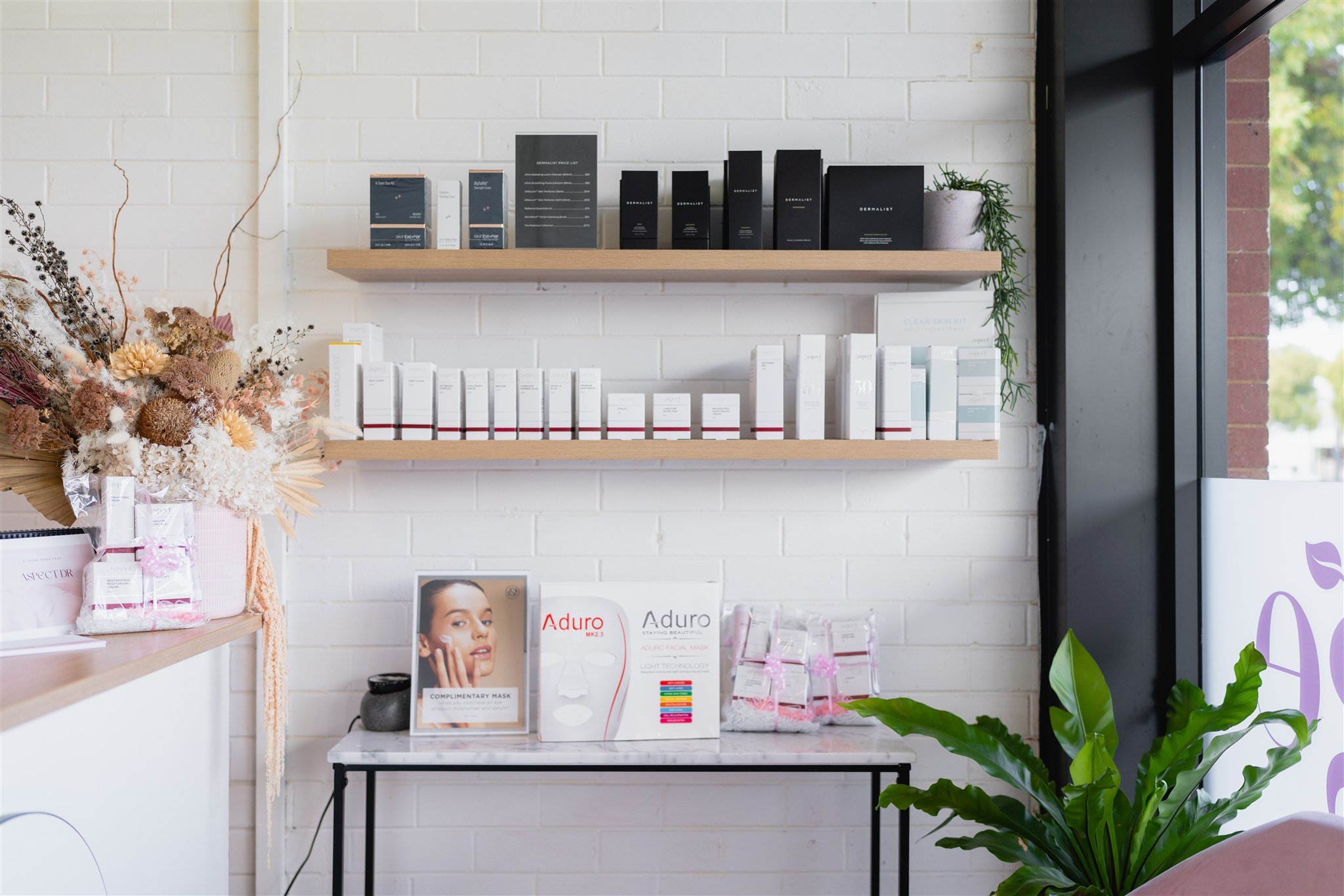Hyperpigmentation
TREATMENTS AT NEW AGE SKIN CARE
Hyperpigmentation is a common skin condition that causes patches of skin to become darker than the surrounding skin. It can be caused by a variety of factors, including sun damage, hormonal changes, and certain medications.
Learn about the symptoms of hyperpigmentation and the different treatment options available to help reduce the appearance of these dark spots here.
Hyperpigmentation explained…
It doesn’t matter how dark, or light your skin may be hyperpigmentation can affect people of any race or ethnicity. It can also effect you at any age too!
Our bodies contain a substance called melanin which is responsible for giving the human race it’s broad, beautiful spectrum of colour!
The level of melanin determines the colour of our eyes, hair and skin. The more melanin you produce, the darker these features will be. It’s one of the things that makes you uniquely you!
Hyperpigmentation is where the body desposits extra melanin in certain areas, creating darker patches compared with the surrounding skin.
Exess melanin can occur anywhere on the body, but it is most commonly found on the face, neck, and hands. There are several different types of hyperpigmentation, each with their own causes and treatment options.
When your skin is exposed to the sun and it’s UV rays, your body increases the production of melanin. It’s the bodies was of protecting itself from further damage.
What are the causes of hyperpigmentation?
Sun damage is one of the most common causes of hyperpigmentation, as exposure to UV rays can increase melanin production.
Hormonal changes, such as those that occur during pregnancy or menopause, can also cause hyperpigmentation.
Inflammation from skin conditions like acne or eczema can also lead to hyperpigmentation.
Certain medications, like some antibiotics or chemotherapy drugs, can cause hyperpigmentation as a side effect. Understanding the underlying cause of your hyperpigmentation is important in order to determine the most effective treatment options.
Hyperpigmentation Skin Consultation
Hyper-pigmentation can make people feel self-conscious and we understand the impacts this can have. If you are concerned about hyperpigmentation we are here to help! Often these types of conditions require an in-person look at your skin. The best way to do this is to book in a Skin Analysis appointment.
During this initial consultation, our qualified skincare experts can come up with an individualised plan to address your specific concern.
Hyperpigmentation is most common in women. In fact, it is so common during pregnancy that some people call signs of hyperpigmentation during pregnancy the ‘mask of pregnancy’.
Hyperpigmentation Types
Melasma - This type of hyperpigmentation can appear as a brown discolouration on the face, usually in patches on the cheeks, forehead and around the lips. It’s typically caused by constraceptives like the pill, pregnancy, genetics and sunexposure, or a combination of a few.
Post-Inflammatory Hyperpigmentation - One common type of hyperpigmentation is post-inflammatory hyperpigmentation, which occurs after an injury or inflammation to the skin, such as acne or a cut.
Drug-Induced Hyperpigmentation - Some antibiotics, antimalarial or chemotherapy medication can cause hyperpigmentation and skin problems as well.
Sunspots, Liver Spots or Age Spots - These are often cause by ageing and a lifetime of sun exposure, they’re normally found on the backs of your hands, chest and face where sub exposure is most common.
How to prevent hyperpigmentation?
While it may not be possible to completely prevent hyperpigmentation, there are steps you can take to reduce your risk. One of the most important things you can do is to protect your skin from the sun by wearing protective clothing, using sunscreen with an SPF of at least 30, and avoiding prolonged exposure to the sun during peak hours.
Additionally, avoiding picking at or scratching your skin can help to prevent post-inflammatory hyperpigmentation.
Finally, maintaining a healthy diet and lifestyle can also help to promote healthy skin and reduce the risk of hyperpigmentation.
Hyperpigmentation Treatments
Treatment options for hyperpigmentation vary depending on the underlying cause and severity of the condition. Treatment options for hyperpigmentation include topical creams, chemical peels, and laser therapy. It is important to wear sunscreen and protect your skin from further damage to prevent worsening of hyperpigmentation.
Laser therapy (SSR/IPL) works by targeting the pigment in the first few layers of skin.
The light pulses heat up the pigment within the skin and break it up. The pigment is then drawn to the top layer of the skin without damaging the surrounding tissue. Once drawn to the surface, the pigmented lesions dry and flake off, or fade, leaving the skin with an even tone.
For pigment reduction using laser therapy usually three to four treatments are required, though this depends on the severity of the clusters of pigment and where they are located.
Physician only formulas
Some common treatments include specialy formulated creams or gels containing ingredients like hydroquinone, retinoids, or kojic acid, which can help to lighten the skin and reduce the appearance of dark spots apprent with hyperpigmentation.
We have a variety of products at New Age Skin Care that can help. Like this one from Aspect. Complete Pigment Plus is a powerful formula which combines Tranexamic Acid and Tyrostat-11 unveiling a more even, radiant-looking complexion.
Chemical peels are great treatment options as well! Our chemical peels are medical strength facial peels and they remove the microscopic outer layers of the skin and stimulate growth from the deeper layers. This promotes new, healthy skin cells, resulting in a fresher, smoother and more refined appearance. Chemical Peels are a great way to achieve optimum results for hyperpigmentation without the significant ‘downtime’ needed by other intensive treatments.
Find out more about our different types of chemical peels on our chemical peel page.
SSR Pigmentation Treatment (Laser Therapy) Prices
Arms Pigmentation Treatment
30 mins · $249
Declottage Pigmentation Treatment
30 mins · $199
Face Pigmentation
30 mins · $139
Face Pigmentation Half Face
30 mins · $79






